The Denver Art Museum’s (DAM) major campus development project is now complete and open to the public. As part of the larger campus transformation effort, OMA / Shohei Shigematsu have designed 11,500 square-feet of new and renovated galleries within the original footprint of the Gio Ponti-designed Martin Building, for the museum’s collection of architecture and design, as well as a hands-on studio.
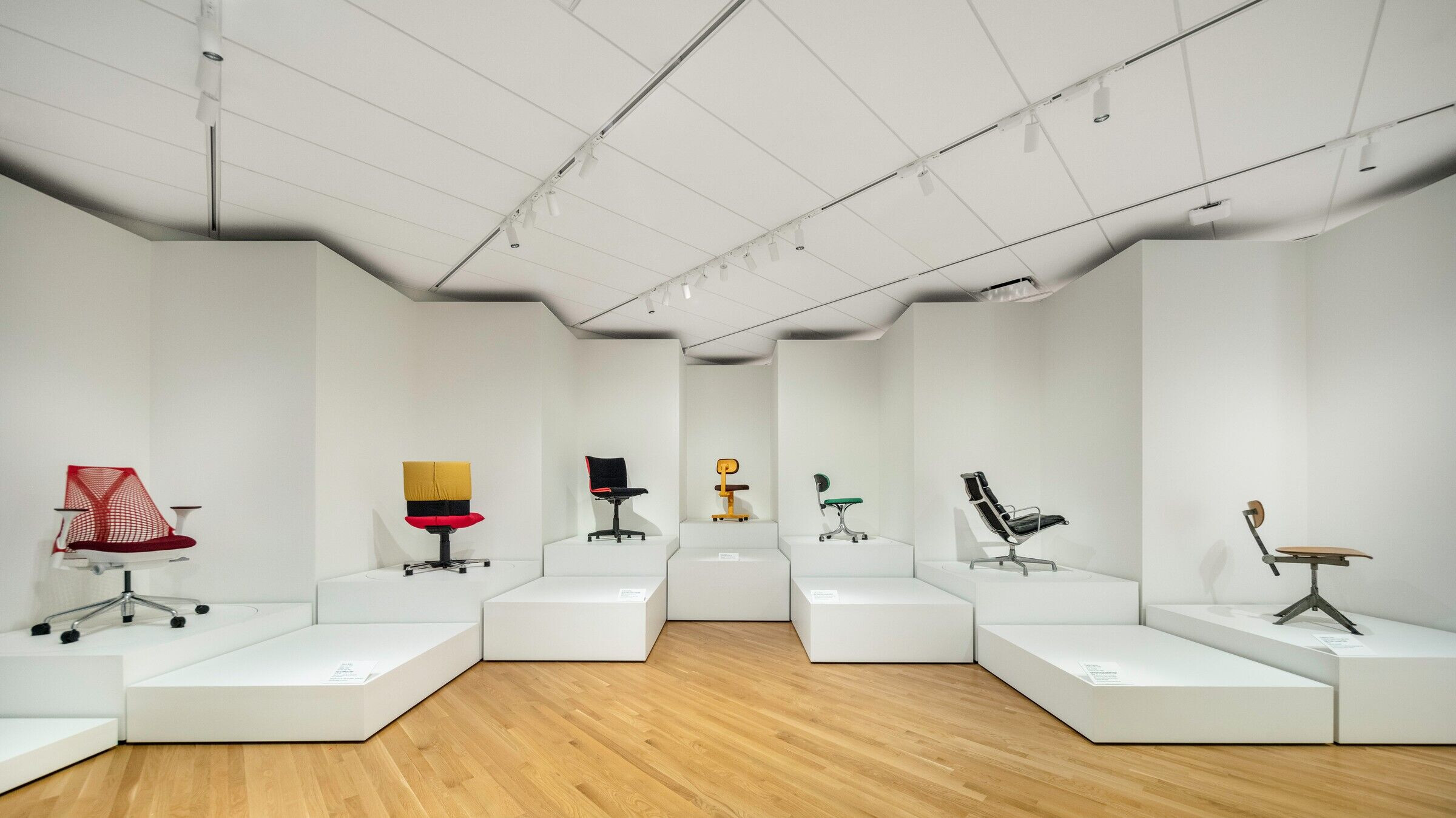
The project is part of an overall campus reunification and building renovation project led by Machado Silvetti and Fentress Architects, with new design galleries created by horizontally bisecting the museum’s original Stanton Gallery on level 1. OMA has designed two inaugural exhibitions taking place two new galleries and featuring over 400 objects—By Design: Stories and Ideas Behind Objects in the Amanda J. Precourt Design Galleries (Design Gallery), and Gio Ponti: Designer of a Thousand Talents in the Joanne Posner Mayer Gallery (Mezzanine Gallery). A third space, the Ellen Bruss Design Studio (Studio) is a flexible and interactive space for visitors to explore design as a process, engaging directly with objects and materials and creating new works.
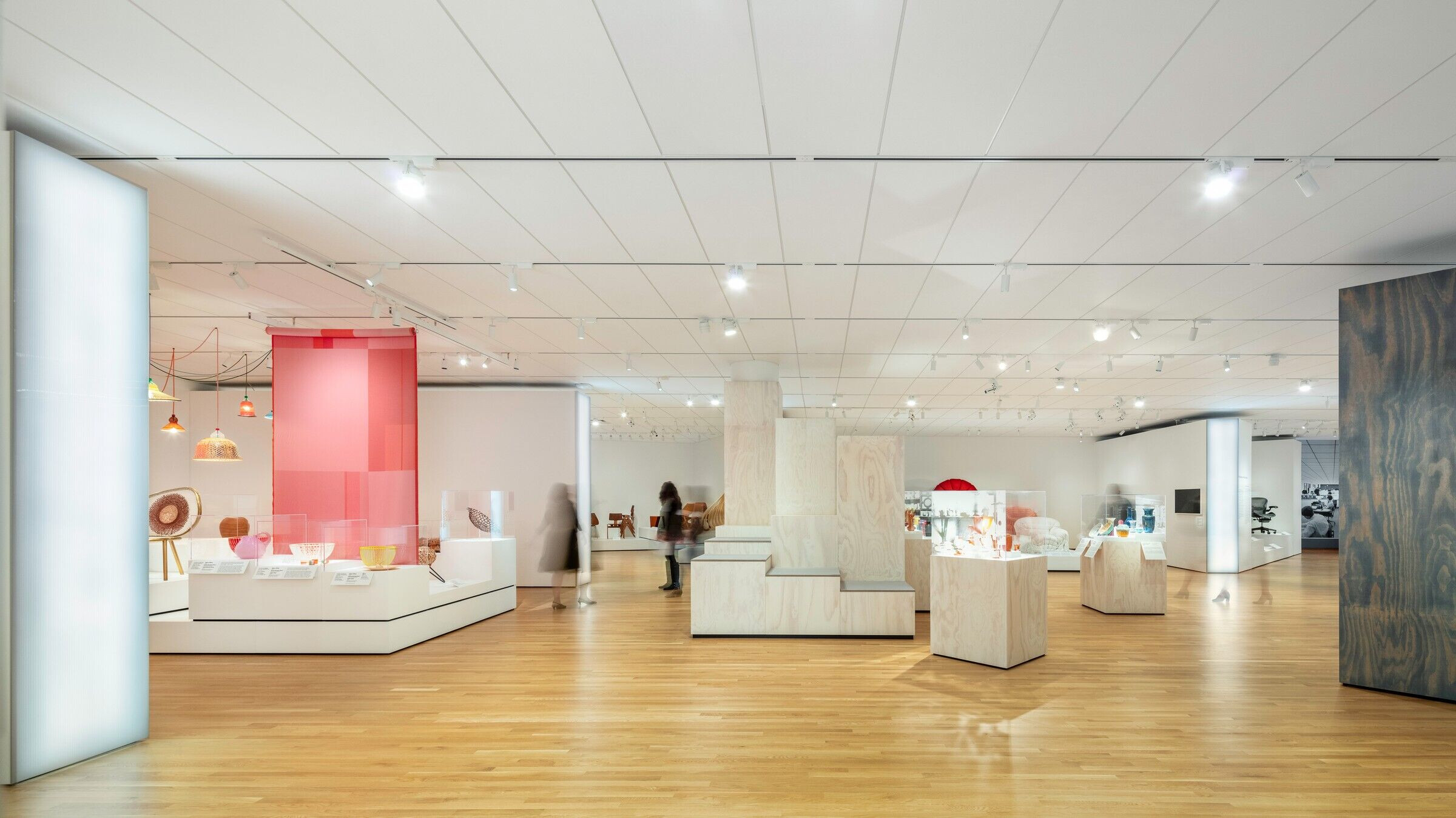
Shohei Shigematsu, OMA Partner, says “It was an exciting exercise, designing within the historic Gio Ponti building and drawing from his extensive, multi-faceted body of work. Much like his design philosophy, the role of design seems to grow and diversify exponentially. A direct consequence of design ubiquity is accessibility and literacy, and we wanted the galleries to react to these changes. The three spaces pose new ways of seeing as well as interacting with objects and materials—they present different spatial and programmatic identities but work collectively as a platform for shifting the discourse beyond mere consumption of design, by incorporating movement, odd perspectives, and intimacy.”
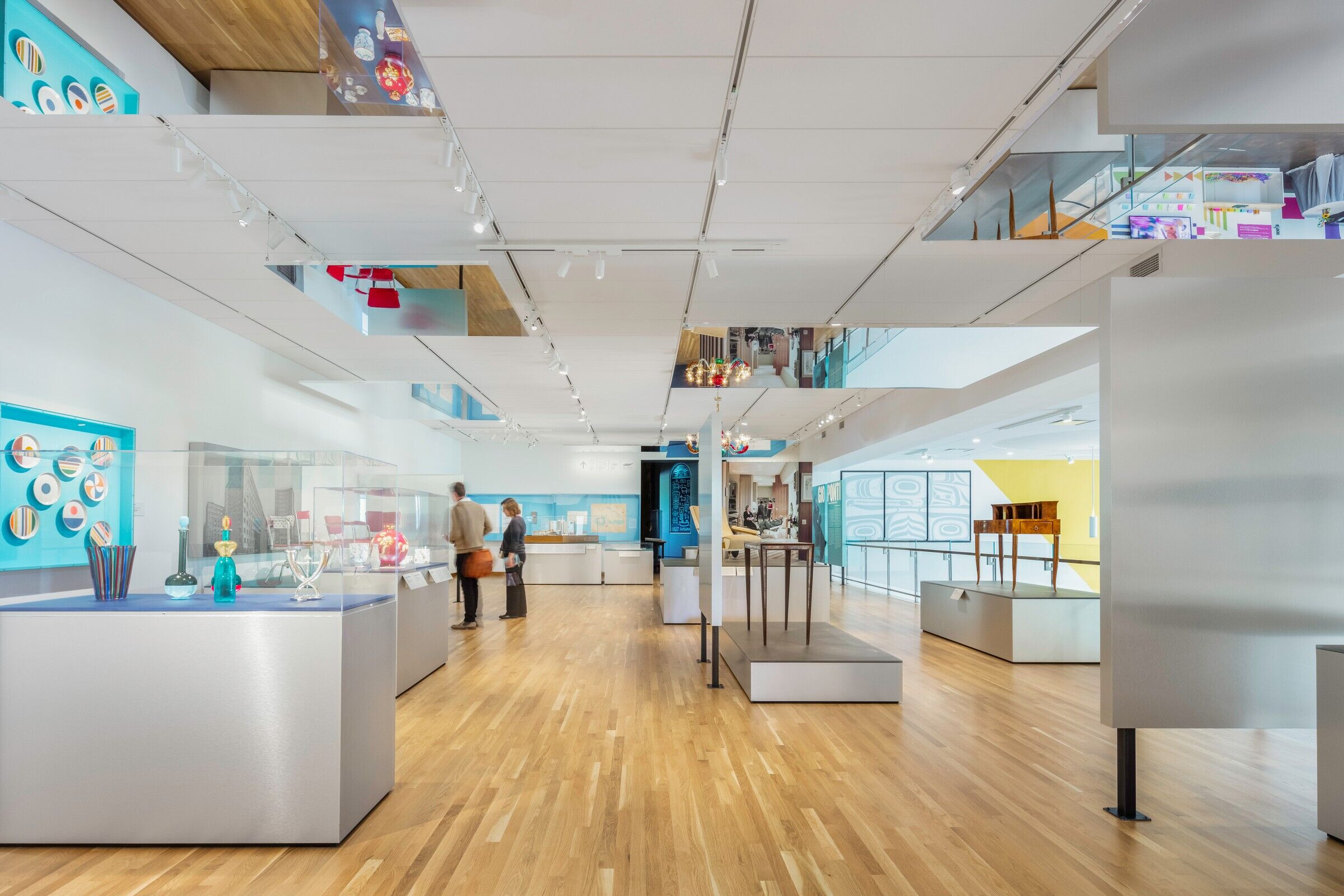
Rotated to the original grid of Denver, the Gio Ponti’s Martin building is a product of an urban condition. The three new rooms amplify Ponti’s intention. The interactive Studio, piazza-like Design Gallery, and topographic Mezzanine Gallery act as distinct yet interconnected zones to stimulate “urban” activity within the museum, like one might experience walking through city blocks. The rooms also integrate subtle references to Ponti—floating abstract planes within the Mezzanine Gallery, compositional techniques reminiscent of Ponti’s furniture design within the Studio, and in the Design Gallery, a curved entry echoes the swooping curves of the Martin Building while its display platforms and walls are rotated to the city grid.
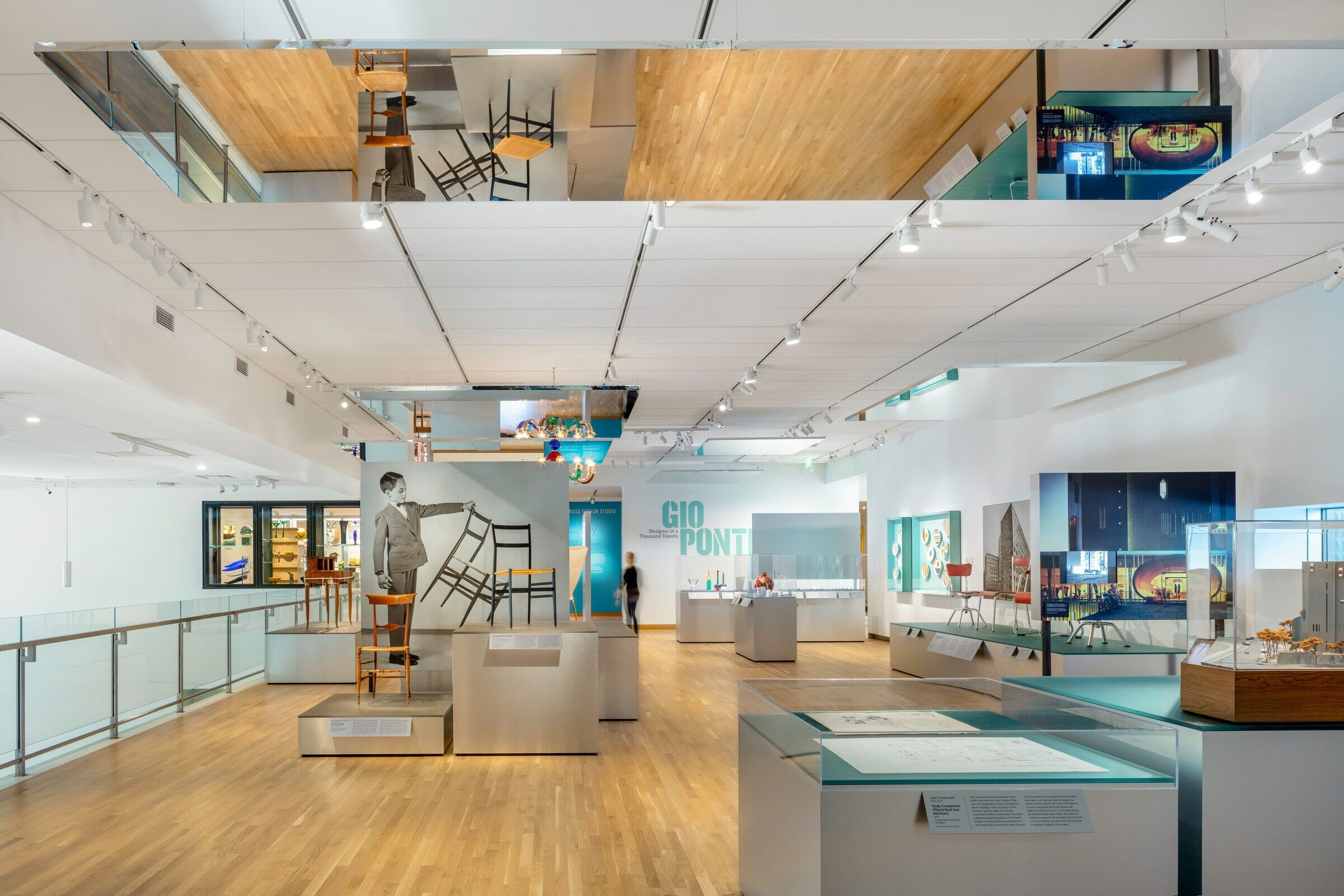
Christy Cheng, OMA Associate, says “Working with the Denver Art Museum team on the architecture and design galleries and studio was a particularly meaningful way for us to continue our collaboration with the museum. Architectural and design objects are ones that people encounter every day, and we loved working with DAM to consider how to best tell the stories behind those objects so that the visitor understands design as a process.”
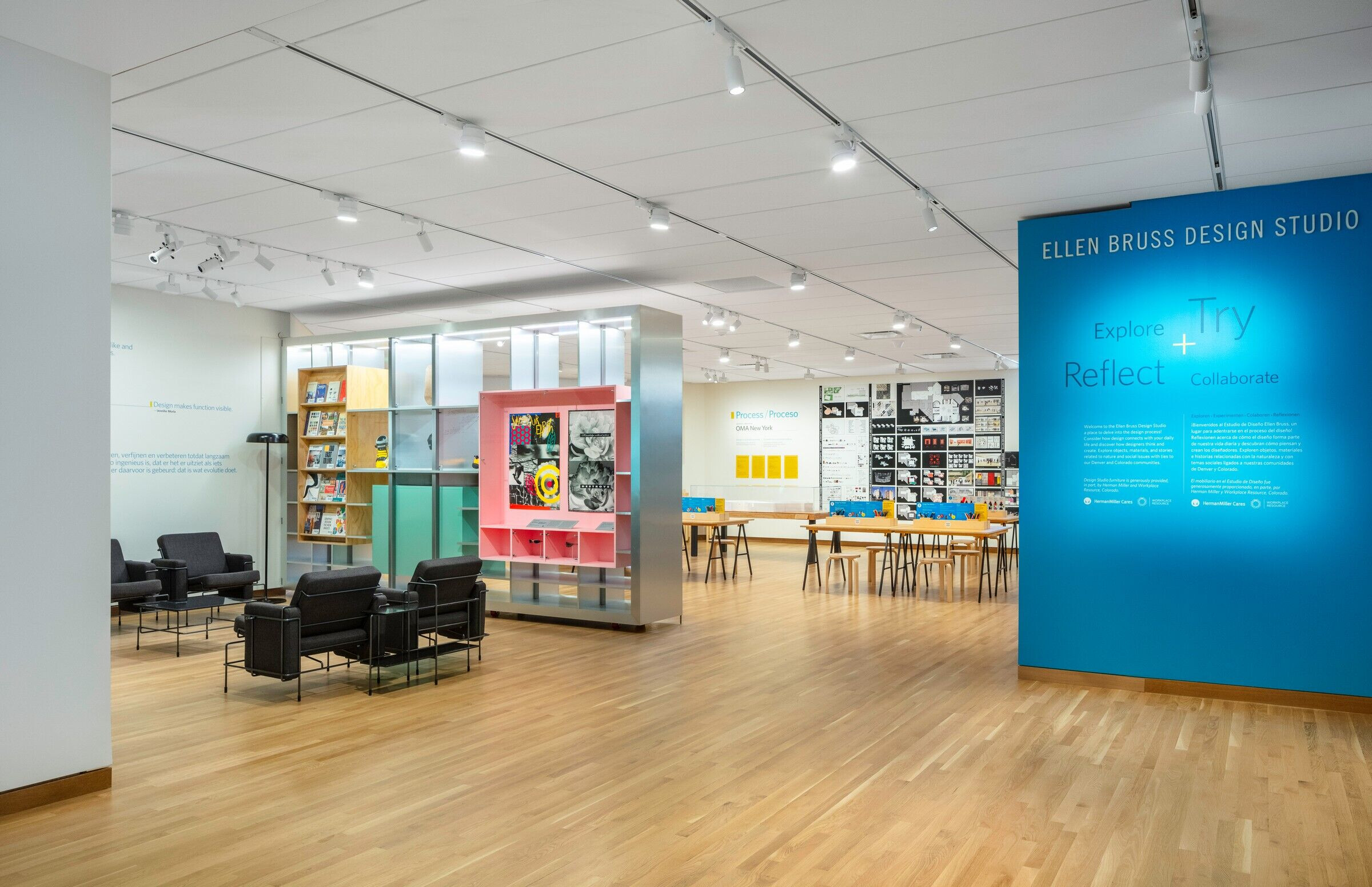
The 7,750-square-foot Design Gallery follows a logic of spatial typologies. An open, central “piazza” is surrounded by perimeter rooms organized in an alternating sequence of rooms and islands. Within the rooms the viewer is surrounded by the displayed objects. Islands and piers place objects centrally, allowing views from multiple vantage points. A modular and flexible catalog of platforms facilitate the inherent diversity of types, sizes and medium of design objects on display. The gallery is capable of being efficiently rotated between different exhibitions through reaggregations of platforms, allowing a permanent exhibition space to be transformed at will.

The 1,900-square-foot Mezzanine Gallery draws from Ponti’s use of floating abstract planes to zone the gallery and curation. Display structures, platforms, and signage are reminiscent of the use of shifted volumes in Ponti’s work. Objects are raised and lowered to different heights within logical boundaries creating layers of perspectives. On the ceiling, mirrored surfaces add another layer of horizontal planes that reflect moments of the installation and the people walking through it.
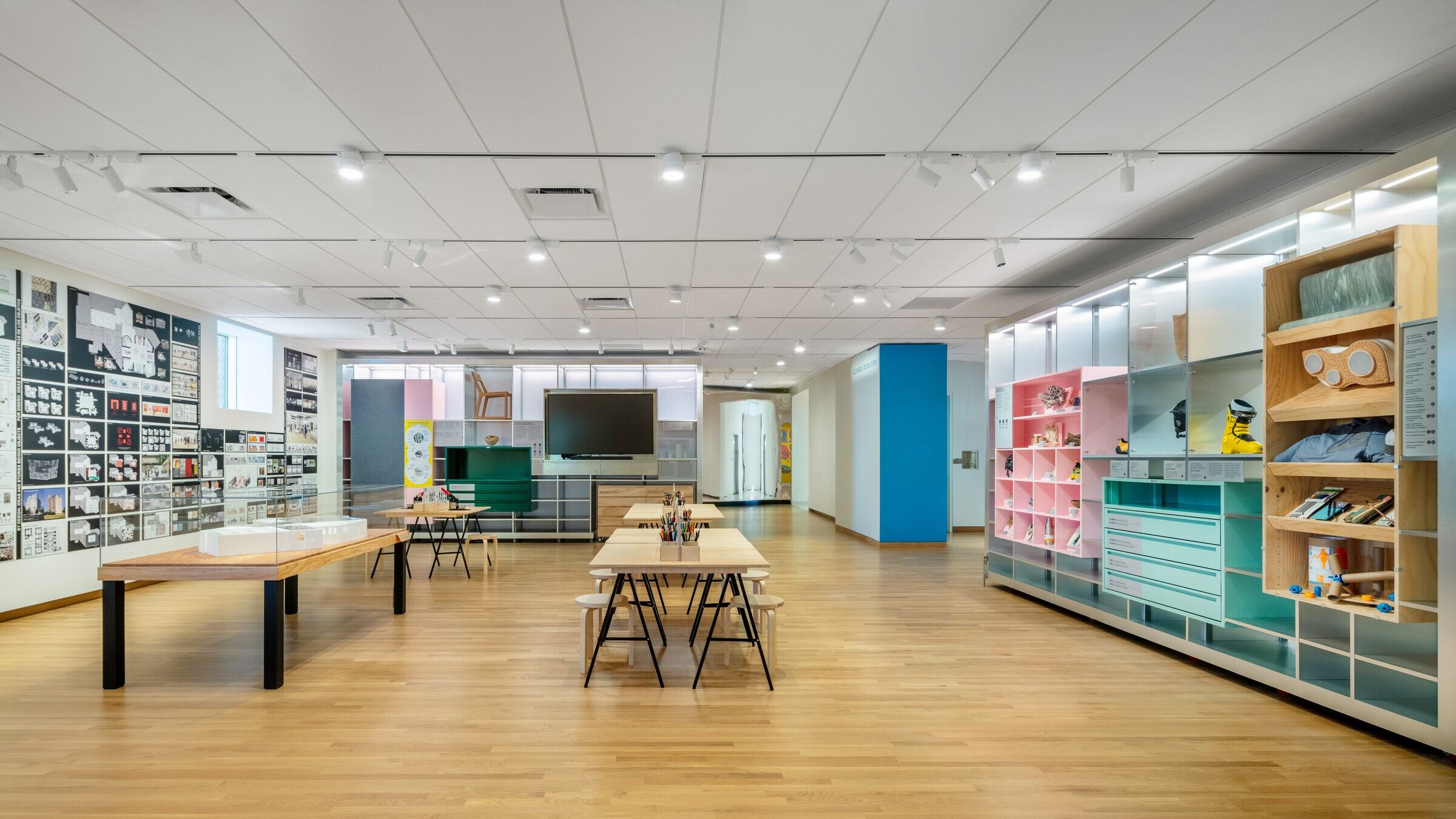
The Design Studio responds to new ways of absorbing information and contextualizes artworks on view through hands-on experiences. A series of hinged walls can be deployed into fluid configurations for a range of programs such as library, lounge, workshops, presentations and other community oriented activities. Workshop walls employ Ponti’s compositional techniques such as partial planes to organize and spotlight various displays and activities. The two exhibitions, as well as the Amanda J. Precourt Design Galleries, the Joanne Posner Mayer Gallery, and the Ellen Bruss Design Studio was designed by OMA New York, led by Partner Shohei Shigematsu and Associate Christy Cheng. The project follows OMA’s collaboration with DAM on the exhibition design for Dior: From Paris to the World, presented in 2018.
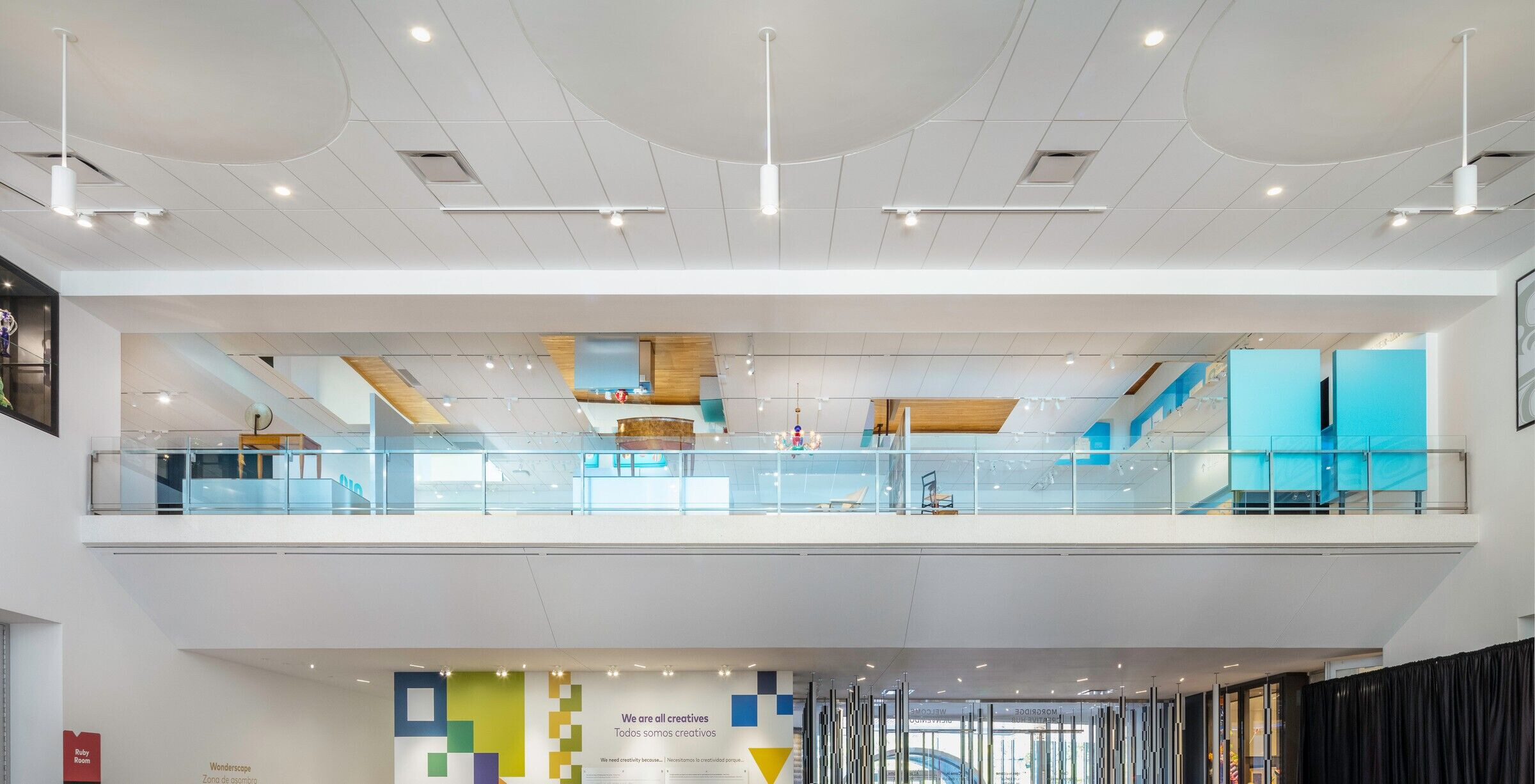
DESIGN STATEMENT
Comprising nearly 19,000 works dating from the sixteenth century to the present day, the DAM’s architecture and design collection encompasses one of the most preeminent modern and contemporary design collections of any comprehensive museum in the US, featuring a broad range of design practices, including architecture, furniture and industrial and graphic design.
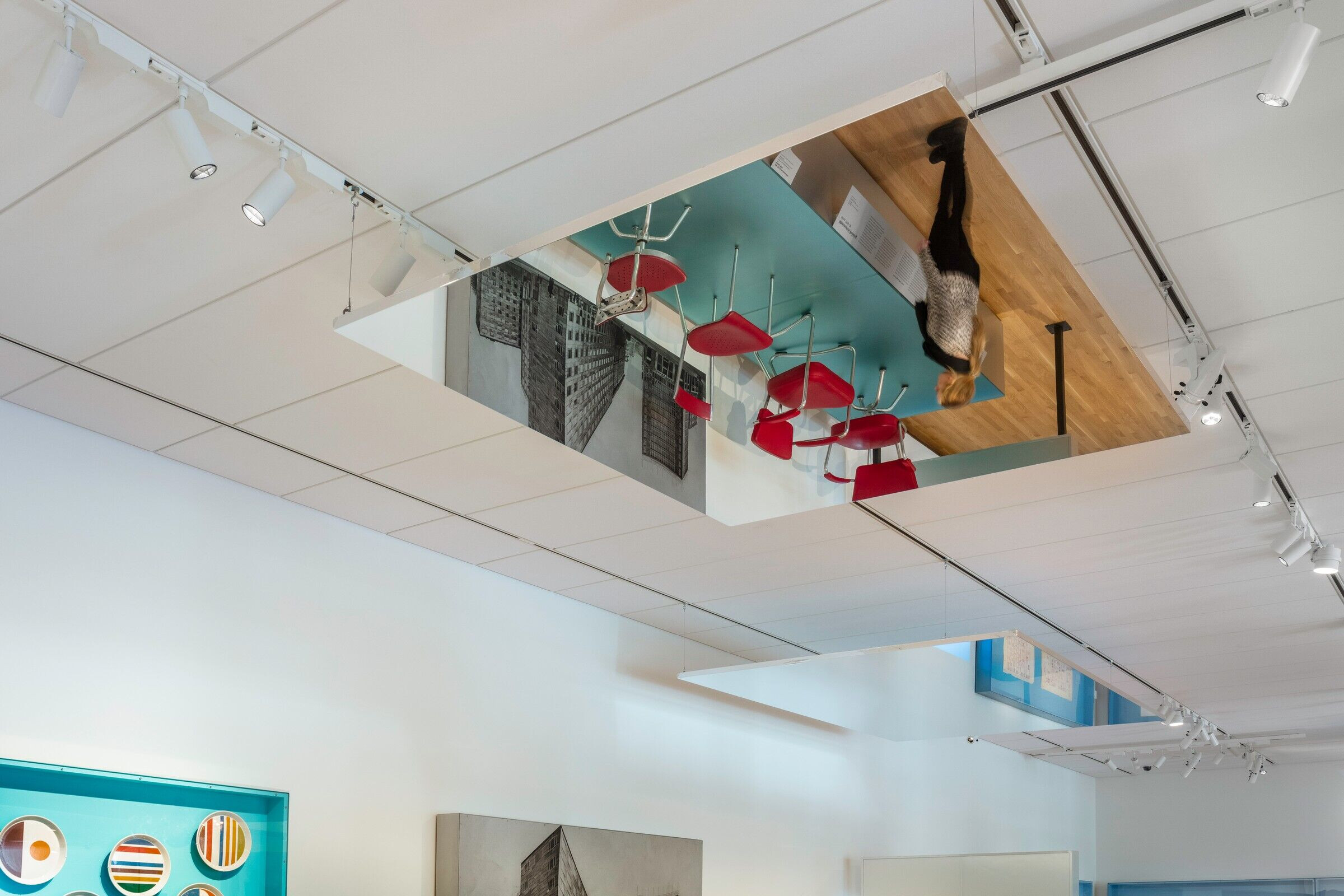
As part of an overall campus reunification and building renovation project led by Machado Silvetti and Fentress Architects, the Denver Art Museum has created new design galleries by horizontally bisecting the museum’s original Stanton Gallery on level 1. OMA has designed two inaugural exhibitions taking place two new galleries and featuring over 400 objects—By Design: Stories and Ideas Behind Objects in the Amanda J. Precourt Design Galleries (Design Gallery), and Gio Ponti: Designer of a Thousand Talents in the Joanne Posner Mayer Gallery (Mezzanine Gallery). A third space, the Ellen Bruss Design Studio (Studio) is a flexible and interactive space for visitors to explore design as a process, engaging directly with objects and materials and creating new works.
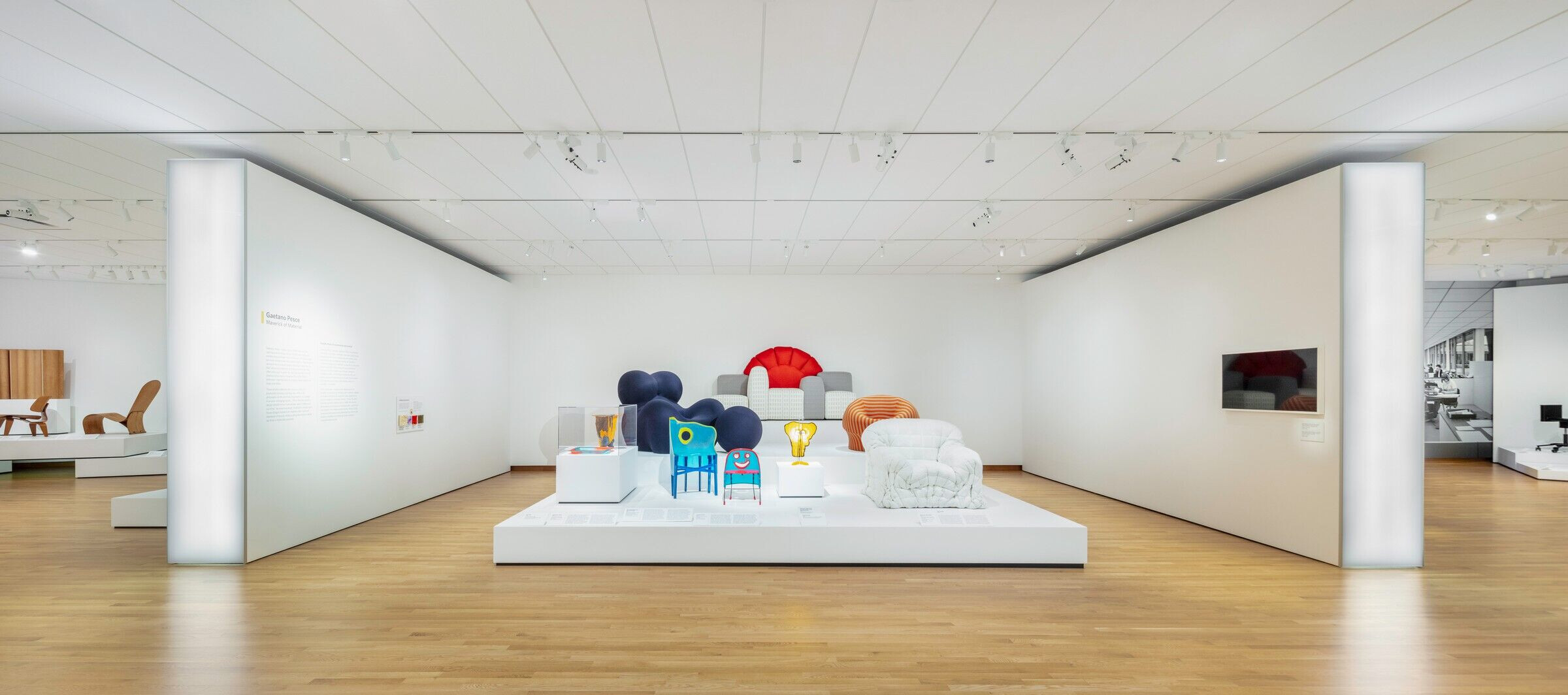
Rotated to the original grid of Denver, the Gio Ponti’s Martin building is a product of an urban condition. The three new rooms amplify Ponti’s intention. The interactive Studio, piazza-like Design Gallery, and topographic Mezzanine Gallery act as distinct yet interconnected zones to stimulate “urban” activity within the museum, like one might experience walking through city blocks. The rooms also integrate subtle references to Ponti—floating abstract planes within the Mezzanine Gallery, compositional techniques reminiscent of Ponti’s furniture design within the Studio, and in the Design Gallery, a curved entry echoes the swooping curves of the Martin Building while its display platforms and walls are rotated to the city grid.
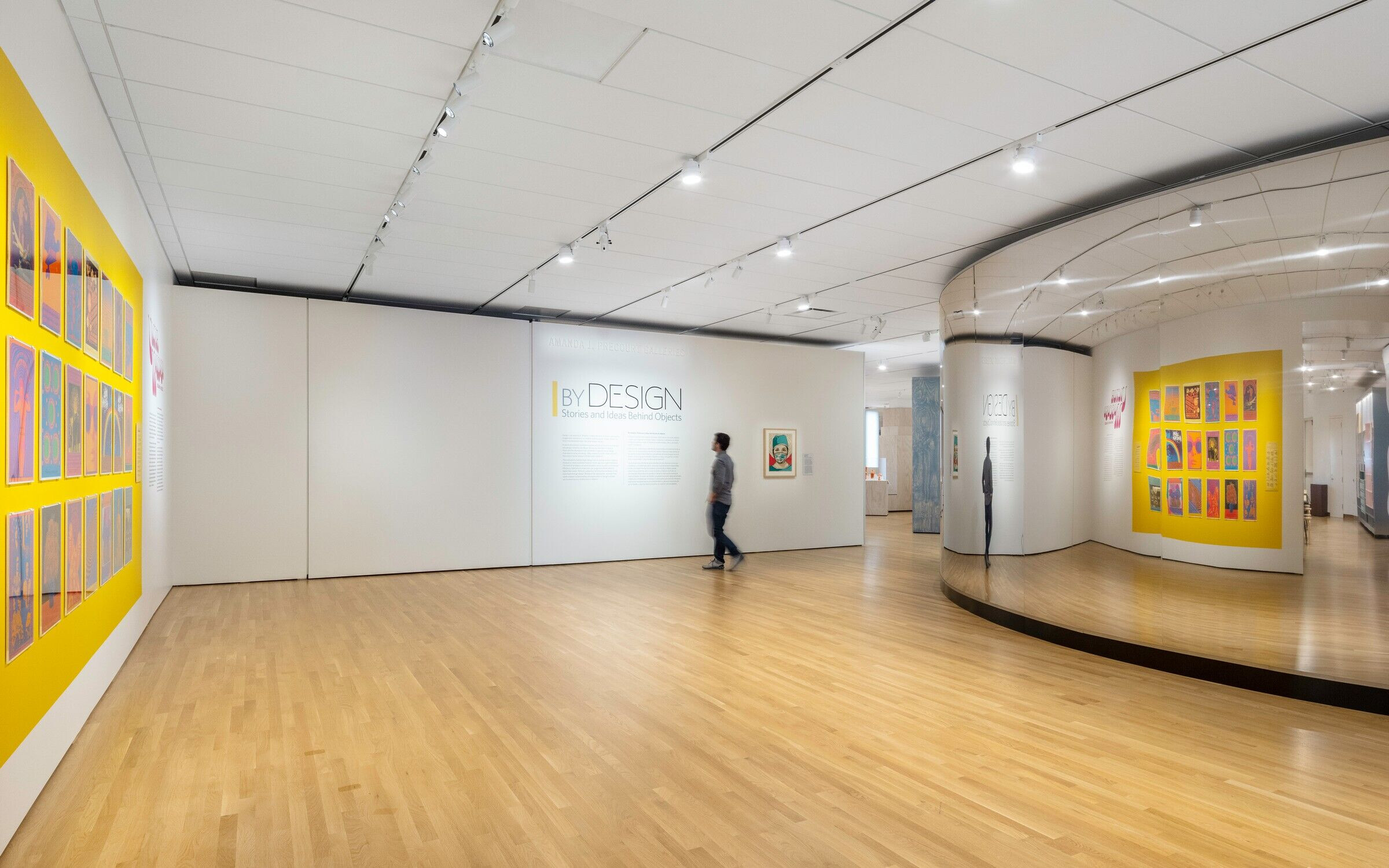
The 7,750-square-foot Design Gallery follows a logic of spatial typologies. An open, central “piazza” is surrounded by perimeter rooms organized in an alternating sequence of rooms and islands. Within the rooms the viewer is surrounded by the displayed objects. Islands and piers place objects centrally, allowing views from multiple vantage points. A modular and flexible catalog of platforms facilitate the inherent diversity of types, sizes and medium of design objects on display. The gallery is capable of being efficiently rotated between different exhibitions through reaggregations of platforms, allowing a permanent exhibition space to be transformed at will.
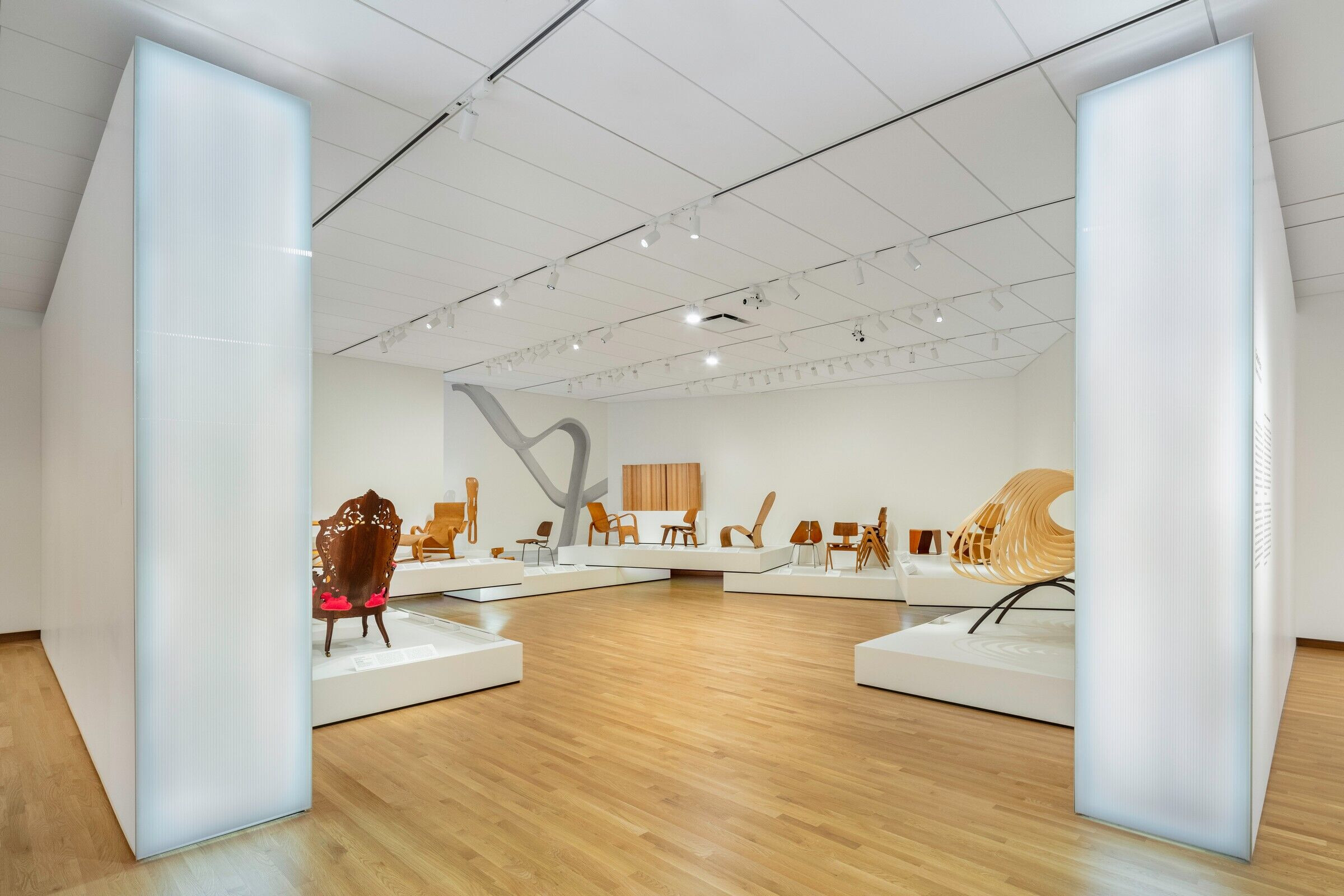
The 1,900-square-foot Mezzanine Gallery draws from Ponti’s use of floating abstract planes to zone the gallery and curation. Display structures, platforms, and signage are reminiscent of the use of shifted volumes in Ponti’s work. Objects are raised and lowered to different heights within logical boundaries creating layers of perspectives. On the ceiling, mirrored surfaces add another layer of horizontal planes that reflect moments of the installation and the people walking through it. The Design Studio responds to new ways of absorbing information and contextualizes artworks on view through hands-on experiences. A series of hinged walls can be deployed into fluid configurations for a range of programs such as library, lounge, workshops, presentations and other community oriented activities. Workshop walls employ Ponti’s compositional techniques such as partial planes to organize and spotlight various displays and activities.
































